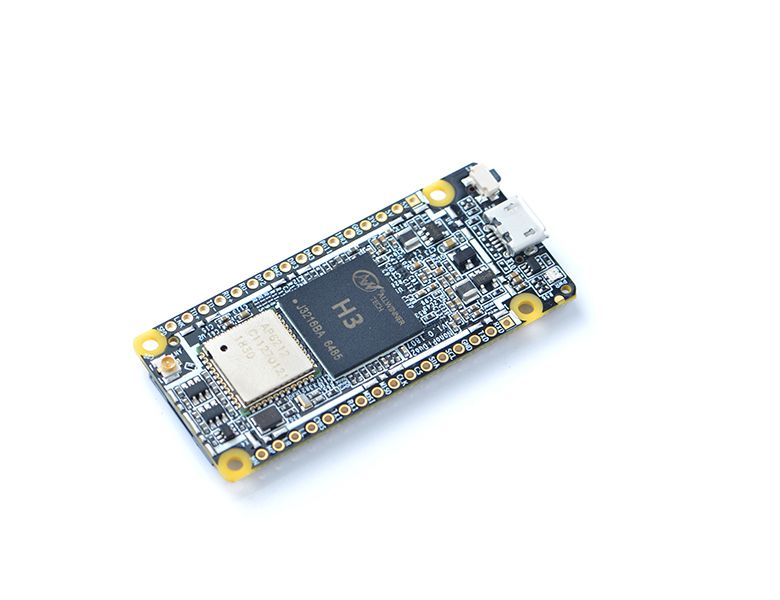
NanoPi Duo2 by FriendlyElec
The NanoPi Duo2(“Duo2”) is an ARM board designed and developed by FriendlyELEC for makers and hobbyists. It is only 55 x 25.4mm. It features Allwinner quad-core A7 processor H3, and has 256M/512M DDR3 RAM, onboard WiFi & bluetooth module and an OV5640 camera interface. It works with Linux variants such as Ubuntu Core.
The NanoPi Duo2 is tiny and compact with rich interfaces and ports. It takes power input from its MicroUSB port and can be booted from a Micro SD card. It works with general bread-boards. Interface pins such as USB, SPI, UART, I2C, PWM, IR, audio input & output and Fast Ethernet etc are populated.
The NanoPi Duo2 supports software utilities such as WiringNP and Python etc. These are all open source. It is suited for various IoT applications.
- CPU: Allwinner H3, Quad-core Cortex-A7 Up to 1.2GHz
- DDR3 RAM: 512M
- Connectivity: 10/100M Ethernet
- WiFi: 802.11b/g/n
- Bluetooth: Bluetooth V4.0 of 1, 2 and 3 Mbps.
- Camera: OV5640
- Key: GPIO Key
- USB Host: 2.54mm pin x2, exposed in 2.54mm pitch pin header
- MicroSD Slot x 1
- MicroUSB: OTG and power input
- Debug Serial Interface: exposed in 2.54mm pitch pin header
- Audio input/output Interface: exposed in 2.54mm pitch pin header
- GPIO1: 2.54mm spacing 16pin. It includes UART, SPI, I2C, Audio etc
- GPIO2: 2.54mm spacing 16pin. It includes USB,10/100M Ethernet, IO etc
- PCB Dimension: 25.4 x 55mm
- Power Supply: DC 5V/2A
- Temperature measuring range: -20℃ to 70℃
- OS/Software: U-boot,Linux-4.14 / Linux-3.4, Ubuntu 16.04.2 LTS (Xenial)
Purchase
Contribute
Have some info to add for this board? Edit the source for this page here.
Adafruit Blinka Installation
We use a special library called adafruit_blinka (named after Blinka, the CircuitPython mascot) to provide the layer that translates the CircuitPython hardware API to whatever library the Linux board provides.
For example, on Raspberry Pi we use the python RPi.GPIO library. For any I2C interfacing we'll use ioctl messages to the /dev/i2c device. For SPI we'll use the spidev python library, etc. These details don't matter so much because they all happen underneath the adafruit_blinka layer.
